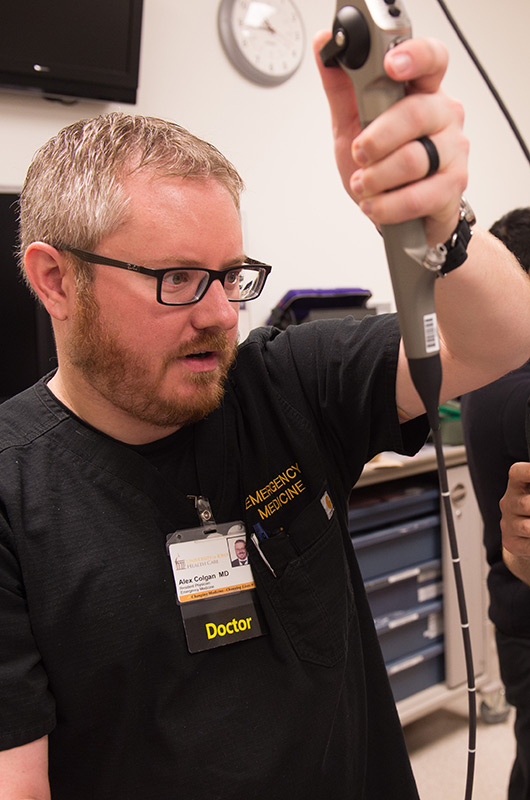Advantages of our program
- Outstanding, nationally-recognized clinical faculty who have trained all over the country. Teachers who have recognized that University of Iowa is a very special place and have come here to help create a world-class teaching institution.
- Abundant clinical experience comes from our burgeoning patient census, and more than a fifth of our patients are pediatric.
- University of Iowa is one of the top research institutions in the nation providing unparalleled resources. Our department has many ongoing clinical, basic science, and translational research projects.
- We have a diverse faculty with expertise in critical care, ultrasound, simulation, sports medicine, social medicine, emergency medicine services, toxicology, and others.
- Our Emergency Department supports a team full of clinical pharmacist who assists with patient care and is highly involved in our research programs.
- We have 24-hours a day of full social work support dedicated to the Emergency Department.
Facilities
- State-of-the-art, 60,000 square foot Emergency Department that contains 45 beds.
- One of two Level 1 trauma centers and burn center in Iowa.
- University of Iowa Hospitals & Clinics is a 811-bed hospital.
Clinical experiences
- The Emergency Medicine residents get a longitudinal EMS experience starting as interns with exposure to local EMS agencies during orientation month, required ambulance ride along throught all years of residency, and event medicine coverage at Iowa Hawkeyes football games, basketball games, and wrestling matches culminating in a 2-week EMS month during the third year.
- Our residents learn cutting-edge critical care through dedicated rotations in the Surgical and Neurosciences ICU, the Medical ICU, the Pediatric ICU, and the Burn Unit at a tertiary academic medical center.
- Fellowships in EMS, Critical Care, Sports Medicine, Medical Education, Social Medicine, Toxicology, Research, Ultrasound, and Palliative Care.
- Optional Wilderness Medicine course taught mainly in the mountains of Colorado by Iowa faculty.
- Moonlighting available in surrounding community to eligible PGY-3 residents.
- Medical simulation is used extensively within the residency training program. The residency has a full time simulation director who coordinates this area of the residency curriculum. Residents receive training using high-fidelity simulators to augment their clinical experience.
- The residency program has a close relationship with our partner community hospital in Cedar Rapids, with residents spending several months learning there. This allows residents to experience patient care not only in a large academic center, but also at a large community hospital.
- Residents have access to an optional emergency medicine rotation at a nationally ranked critical ccess hospital in Washington, Iowa to gain experience in yet another patient care setting.
Resident Representatives
- EMRA Representative: Nancy Mikati, MD
- AAEM Representative: Kasia Marciniec, DO
- ACEP Representative: Omar Shaban, MD
- House Staff Council: Unique Andres, MD
- Program Evaluation Committee Members: Nick Lind, MD/Nancy Mikati, MD/Omar Shaban, MD
